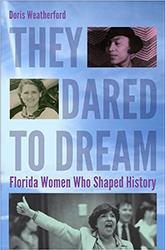In this survey of foundational theory on James Joyce's <em>Ulysses</em>, seasoned Joyceans introduce the methodologies that have made significant contributions to understanding the novel.
Search Results for 'Barbara A. Purdy'
1084 results for 'Barbara A. Purdy'
Please note that while you may order forthcoming books at any time, they will not be available for shipment until shortly before publication date
Atlanta stands out among southern cities for many reasons, not least of which is the role African Americans have played in local politics. Black Power in Dixie offers the first comprehensive study of black politics in the city.
This volume presents two rare works by the American modernist H.D.: <em>Within the Walls</em>, a collection of fourteen short stories, and <em>What Do I Love?</em>, a set of three long poems.
Explore Florida's history, culture, and national wonders on these fascinating, manageable walks that will appeal to tourists in search of the real Florida and residents who want to become better acquainted with their state. With 58 b&w photos and 6 maps.
The untold stories of Florida’s most extraordinary women.
An inside look into the sausage-making process of Florida politics
In this introduction to the work of Italo Calvino, the author, a friend of Calvino's, traces his development as of one of the first and most defining of the postmodernists. Examines his ties to authors Beckett, Borges, Kafka, Conrad, and Twain.
How, and why, one individual--once known as the most dangerous man in America--could become a loyal foot soldier on both sides of the Cold War ideological divide is the subject of this fascinating, incisive biography.
Guide and Reference to the Turtles and Lizards of Western North America (North of Mexico) and Hawaii
Accessible, accurate, and up-to-date, with striking color photographs and range maps!











